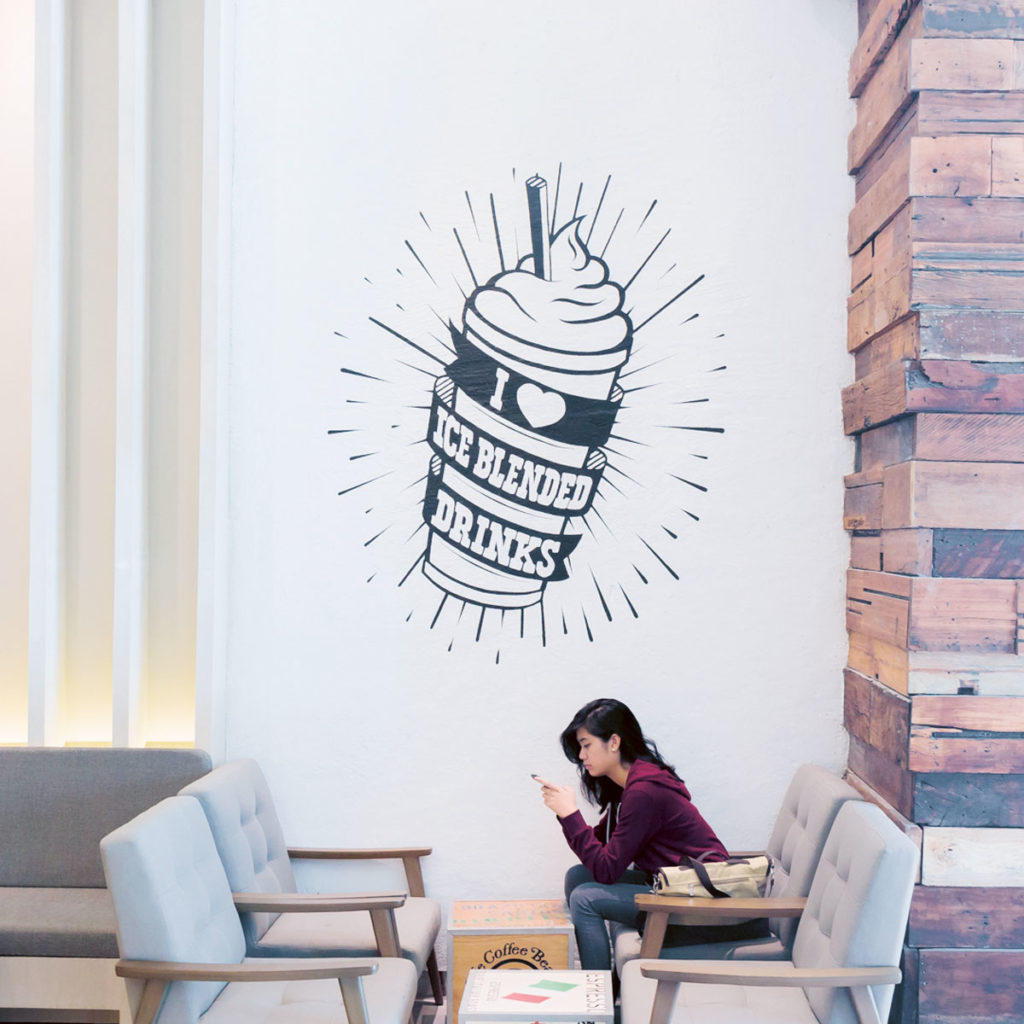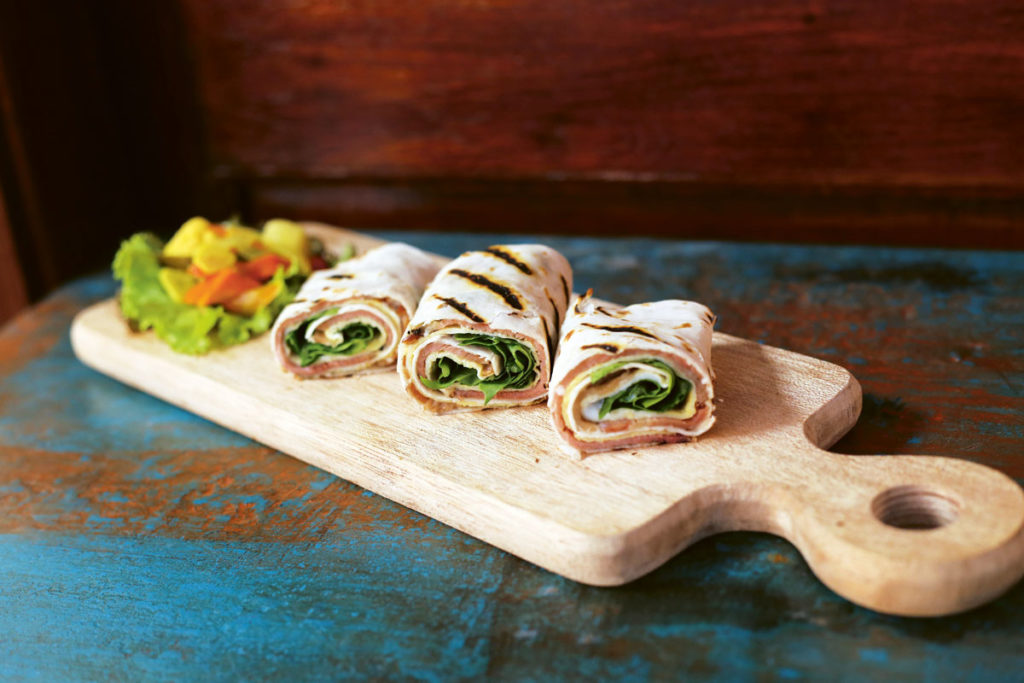Mistakes make restaurateurs stronger. That might sound dubious, foolish even, but by welcoming early-career blunders, restaurant owners can put themselves at an advantage in the long run. Industry tips can be learned through books or television documentaries, but they can’t compare to the real-life experiences of the people who have restlessly persisted their way along the same career arc and whose disasters help hammer home the point.
Quick turnaround

Seventeen years ago, The Coffee Bean & Tea Leaf’s significant presence in the Philippines could have been derailed within its first year of operations had it succumbed to the conviction that early successes would naturally replicate themselves.
“My team and I opened two stores that by all financial measures surpassed expectations,” says Walden Chu, president and CEO of CBTL Holdings Inc. “We planned for a more aggressive rollout in the second year that hit a snag when our third store in Tomas Morato, despite a fantastic location, did not meet targets and adversely strained our very young company’s limited financial resources.”
After Walden Chu began taking serious efforts to “adopt several paradigm shifts and further develop the business model,” The Coffee Bean & Tea Leaf propagated a long-term approach and viable plan since that third-store scare to expand into a 100-store network.
That store remained unprofitable for a number of years and represented a very costly learning curve; however, the process also allowed Chu to retain humility as his core value. “Humility allows us to face our mistakes, so we are able to address them. Humility also reminds us that we have not arrived, so we continuously work diligently towards greater success.”
After Chu began taking serious efforts to “adopt several paradigm shifts and further develop the business model,” The Coffee Bean & Tea Leaf propagated a long-term approach and viable plan since that third-store scare to expand into a 100-store network with new product innovations like Nitro Brew and Nitro Chai rolling out this year. And yes, that Tomas Morato branch has since turned itself around.
Takeaway: A business plan that works for certain locations doesn’t always mean it will work everywhere. Research the demographics of the location, no matter how great it may seem.
Team talks
Modesty is a synonymous sentiment shared by Mother Spice Food Corporation’s Eric Teng, the man responsible for assembling Mango Tree Bistro, Slappy Cakes, and Genki Sushi. “We closed some restaurants in the past because of wrong market studies but that taught us to be versatile with our planning and executions,” he says.
But no company can survive on the backs of its managers alone. It needs great employees. Just like how Teng needed a capable and aligned team to power through past mistakes. “They are often the first people to spot wrong directions from upper management.”
His method of collaborating with talented employees and encouraging different standpoints doesn’t appear to be a massive stylistic shift for top-level management but for new entrepreneurs, underselling this approach could be a fatal error. Working with people who work for you is actually any restaurateur’s biggest ammunition. Involving as many people as possible kicks open the doors to territories that offer plenty of earnest observations where “we can filter our ideas before we commit ourselves to the execution of these ideas.”
“Find the best people who share your vision and empower them to make decisions,” Eric Teng says. “We never want to think that upper management is the smartest and most knowledgeable people in the room so we meet with our key management staff very often and set realistic (weekly or monthly) goals.”
And while Teng’s strongest lessons don’t necessarily break a lot of new ground, his warm, welcoming ways prove that mastery of camaraderie works just as well as cutting through the future with forward-thinking innovations. “Find the best people who share your vision and empower them to make decisions,” he says. “We never want to think that upper management is the smartest and most knowledgeable people in the room so we meet with our key management staff very often and set realistic (weekly or monthly) goals.”
So far, his strategy is paying off, with a new Slappy Cakes café concept set to be introduced as well as two more Genki Sushi branches opening in SM Aura and SM North EDSA within the year.
Takeaway: Collaborate with talented and competent people, as they are often the first ones to spot wrong directions from upper management. Involve the whole team. You can cover more bases if you have more minds thinking.
The market matters

If one criticism of The Moment Group’s Abba Napa’s experience holds merit, it’s that passion projects have an inclination to fizzle. “We opened a French bistro a few years ago that was very close to my heart. It reminded me of fond memories of long, drawn-out, beautiful Parisian meals with friends and I thought, rather ambitiously and unrealistically, that we could replicate those moments in Manila somehow.”
Unfortunately, it proved to be too big and bold an influence to draw upon. “What did I think I misjudged? Simple, traditional-leaning fare still doesn’t command premium price tags in Manila’s dining scene today,” Napa says. “Success is in the timing as much as the idea.”
The focus on quality ingredients has always been of supreme significance to bistro fare, and it’s for this reason that the French bistro, despite an overhaul, failed to make a dent. “The dishes on our menu cost a lot to produce,” Napa says. “It was difficult to find a large enough crowd to sustainably want to spend that much for simple straightforward fare.”
“Do not waste time. Be very honest, critical, and objective about the assessment. If you deduce that the concept itself has flaws, don’t hesitate to consider closing shop and creating something more appropriate for the space,” says Abba Napa.
But the biggest touchstone of this closure brings entrepreneurs back to the most common pitfall tormenting novices: pushing through with what they want. And Napa, the group’s founding partner for creative development, learned an invaluable lesson the hard way. “Being too emotional and attached to an idea can be a very expensive proposition in the restaurant business,” she says, adding that once something doesn’t work, entrepreneurs must check what is wrong immediately.
“Do not waste time. Be very honest, critical, and objective about the assessment. If you deduce that the concept itself has flaws, don’t hesitate to consider closing shop and creating something more appropriate for the space.” That brusque curtness is evident in the way The Moment Group has arranged its portfolio of restaurants, restraining themselves to concepts that the Manila diner would want and what they would enjoy “but maybe doesn’t know it just yet.” Everything is tailored according to the market’s context.
Sure, passion can stoke imaginations or give rise to creations that pique the interest of a certain audience, which Napa still does every now and then, but sometimes creativity alone isn’t enough to capture a larger audience, buoy the brand during trickier times, and gain anticipated profit. “Don’t make restaurants for yourself. At the end of the day, you are creating an experience for others.”
Takeaway: Use both sides of your brain equally. Your concept isn’t any more important than your Excel spreadsheet tracking food costs and production sheets. Also, timing is key. Don’t be so attached to a concept that you’re forgetting all the other aspects of the business.
The L word: Location

As Manila’s dining scene continues on an upward trend, more and more restaurants are joining the fray. In 2015, one of the new entrants was Sean Go’s Adaäm & Yves Organic Bistro, a dream restaurant he prematurely opened in an unfinished building at an off-the-radar location in Bonifacio Global City. It was here that Go realized his vision of a minimalist, atmospheric Nordic space where clean eaters mix with design aficionados. It was also here that he tasted the bitter realities of running a restaurant. Once Go received approval from his biggest investor—his always supportive father—his relentless pursuit for his dream set off a chain reaction that led to Adaäm & Yves’s demise.
“It was too much too soon,” he admits. “The turnover for the location was delayed for over a year, which cost us a ton in construction. We also had to invest so much in our equipment since the space wasn’t meant to have a kitchen. When we finally did open, the building was so new that there was barely any foot traffic. And the half-a-million-a-month rent was also quite impossible to manage.”
“I honestly didn’t know what I got myself into but I still went for it. I eventually had to face the truth. And the truth was, we had to cut our losses short and just stop the business until we find a new—better—location,” says Sean Go.
All of this has made for understandably dispiriting drama. It’s easy to chalk it up to Go’s inexperience, but his singular focus on his dream somehow explains everything that came before and will come after this ordeal. “I honestly didn’t know what I got myself into but I still went for it. I eventually had to face the truth. And the truth was, we had to cut our losses short and just stop the business until we find a new—better—location.”
And while that better location is now off the table, Go is pulling inspired organic fare out of deep personal loss, turning the brand into an upmarket organic food stand and delivery service called Grubb by Adaäm & Yves, which is rolling out in business districts by the end of the year. “We’ll be serving a lot of our signature dishes from Adaäm & Yves, except they’ll be placed in chic takeout packaging for quick and easy eating.” As with any young restaurateur with a dream, what does come through in Go’s case is a ferocious devotion to resilience.
Takeaway: Always have a contingency plan and make sure you’re prepared to make mistakes. If Plan A doesn’t work, go for Plan B, then Plan C, or even Plan Z! Learn until you get it right. This includes preparing for common eventualities, like a lackluster location. Study your location well as it comprises a big bulk of your operational expense.
Best of both worlds

About 572 kilometers south of Manila is a pair of entrepreneurs who urges neophytes to think thoroughly about the image they want to project, even if that means disagreeing with your customer.
“Seven years ago, opening in Cebu, which during that time was dominated by fast food-type restaurants, a guest complained about the pasta bolognese,” says Eya Shrimski, one half of Fudewerx Solutions & Concepts. “Chef Steve [Shrimski] approached the guest and asked why he didn’t like it. Then the guest answered, ‘Because it does not taste like Jollibee.’ We all had a good laugh when chef Steve answered, ‘Thank God for that.’ ”
For the Shrimskis, treading the line between serving food that they believe in and food that the market has grown accustomed to is a difficult but necessary task to preserve a restaurant’s identity. “One of the biggest mistakes we made in the early years was not having enough confidence in branding the type of food that we wanted to do,” says chef Steve. “Though modern Australian cuisine is a mouthful to explain, investing in explaining and educating the market as to what it is would have helped create a following of the cuisine as a result of better understanding.”
“When we opened the next restaurant, with more research and better understanding of the market, we were confident enough to say it is international cuisine and pays respect to the land that it trades. After nearly three years in the business, the quantity of followers has remained encouraging,” says Eya Shrimski.
So much of the Shrimskis’ ethos orbits around the idea of receptiveness. And in Cebu’s landscape where eating habits are easily influenced by locals traveling in and out of the region, it’s clear that the Shrimskis’ 2014 venture, the startlingly romantic Circa 1900 set inside ancestral homes, is a result of listening with half an ear to the Cebu crowd and staying true to their brand. It’s not an easy thing to do but one could surmise the couple’s intentions with their enterprise, especially after that amusing pasta incident. “When we opened the next restaurant, with more research and better understanding of the market, we were confident enough to say it is international cuisine and pays respect to the land that it trades. After nearly three years in the business, the quantity of followers has remained encouraging,” says Eya.
Alongside a strong belief in their brand, the way the Shrimskis managed their operations also made a difference in their company’s definite future. According to them, it’s important to monitor the following top three expenses:
- Food and beverage cost percentage of 33 percent or, ideally, less. But in Cebu where the market is so price-sensitive, they have to be practical.
- Rent should not be more than 10 percent of sales.
- Payroll and related expenses should not be more than 18 percent of sales.
“In running a restaurant business, a focus on these metrics is critical to achieve an ideal level of profit per customer served,” says the couple.
Takeaway: Customers will patronize and support what they like, and if your restaurant is positioned where it is accessible for the guests who understand and respect the food, they will be willing to pay the price.
Originally published in F&B Report Vol. 14 No. 2





